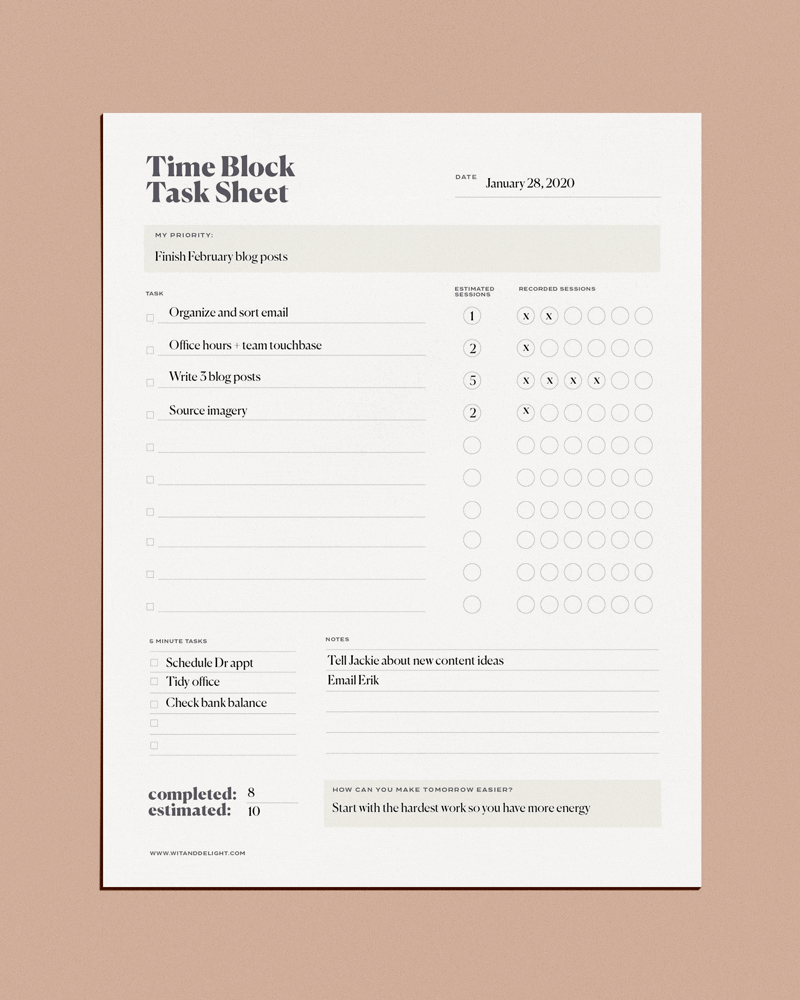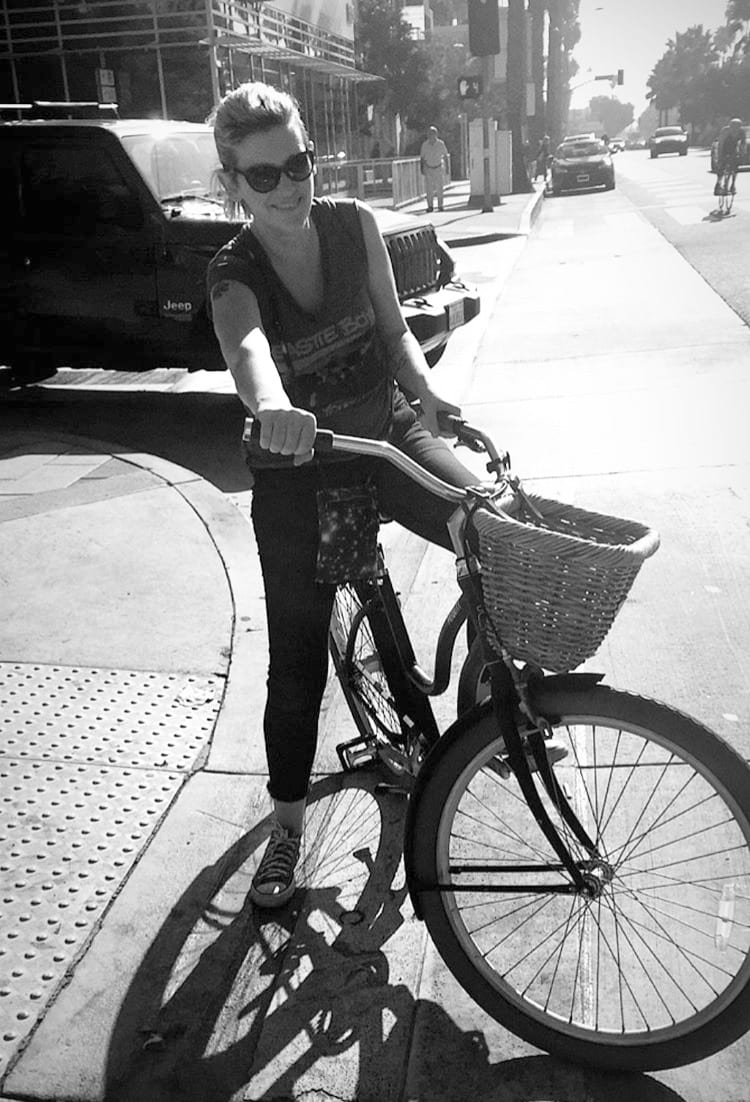
As previously seen on Wit & Delight
Editor’s Note: At the start of 2022, when everyone’s mind is abuzz with a fresh outlook and new intentions, we wanted to reshare this post from 2020. In it, our brand director, Bridgette Dutkowski, writes about how she uses the Pomodoro Technique to stay on track. If you’re curious to try it out for yourself, we also have a handy time tracking worksheet (you’ll find it at the bottom of the post) you can use to help plan out your tasks for each day.
Tick, tick, tick, tick. The metronome ticking of my “focus keeper” app sounds in my ears.
Despite this entire essay being about unlocking productivity, I’ve been looking for excuses not to write it.
It’s not that I have difficulty with focusing. I’ve been working in a bustling open studio for years (and hip advertising offices with little to no privacy before). I’ve been a contractor for five years and, at times, work from home, mere feet away from three very loud children.
Focus isn’t my problem.
Where I do run into trouble is with accomplishing one significant task, as opposed to a myriad of smaller, yet still substantial, to-do items.
What led me to the Pomodoro Technique was research and participation in developing the Wit & Delight line of productivity tools and planners (available now!). I’m not sure what you discuss at your office, but around here, we are swapping strategies and techniques on how to get shit done both efficiently and on time.
In doing a bit of research on how to get more done with less time, I came across the Pomodoro Technique. Knowing just a teensy bit of Italian, I was instantly intrigued at how a tomato could unlock my focus and increase productivity.
Not a fad diet, nor harnessing the power of lutein, the Pomodoro Technique was named for the tomato-shaped kitchen timer of Francesco Cirillo, the developer of the method.
It’s time blocking, with a much more colorful name. Set a timer for 25 minutes, and in those 25 minutes, focus on ONE THING. No multitasking. No coffee break. No scrolling through Instagram. Just concentrate on the singular task at hand.
The brass tacks definition? It’s time blocking, with a much more colorful name. Set a timer for 25 minutes, and in those 25 minutes, focus on ONE THING. No multitasking. No coffee break. No scrolling through Instagram. Just concentrate on the singular task at hand.
After 25 minutes of pure, unadulterated focus, you get a 5-minute break. Scroll, text, grab another cup of coffee because, after that 5, it’s go time again.
Repeat.
That’s it.
No brainer, right?
It was much harder than I thought. As someone who juggles a variety of tasks on the reg, focusing on just one was tougher than I imagined. My mind wandered, and one task led to another item I had to add to my to-do list. Rather than writing the less critical duty down, I’d do it immediately, and lose steam on whatever main task I should have been focusing on. With this technique, I had to retrain my thinking after years of multitasking, rushing through assignments, and getting things done RIGHT NOW to fully focus on one main task in each sitting.
Here’s how I practice the Pomodoro Technique:
I start the morning by writing out my to-do list for the day (this part is not timed!). I then organize my list into chronological order of priority. Knowing I’m much more productive in the morning, I schedule the tasks I’ve been putting off first, so I can spend my afternoons doing more manageable tasks, like responding to emails or reviewing analytics.
Once I’ve turned on my SAD light and have a cup of coffee in hand, I dive into the first couple of 25-minute blocks. It looks something like this:
- 25-minute block: Content development
- 5-minute break: Coffee break
- 25-minute block: Project management
- 5-minute break: Coffee and text break
- 25-minute block: Account management
- 5-minute break: Bathroom break
I continue this pattern of focusing on one task until the ding and then treat myself to five minutes of Insta scrolling or texting guilt-free, knowing that I’ve completed (or mostly completed) a task.
If you are a multitasker (and really, who isn’t?), this method does take some getting used to. I’ve found it helpful to turn off notifications and hide my phone as not to cause distractions. Obviously, this method might not work in all professional settings—customer service (“I’m on my 5-minute break, I’ll be with you in a sec.”) or meetings (“Sorry client, the timer went off, I’m going to put you on mute so I can select the perfect GIF for this group text.”) might not be the best outlet for this technique.
By following the Pomodoro Technique, I have been able to get more done in the same amount of time, without feeling the same exhaustion at the end of the day.
I’d love to hear if you’ve tried this technique before, or what works for you to stay focused.
Want to increase your productivity? Download our free time tracking worksheet (pictured below) to help you stay focused on the task at hand!


When she’s got a break from the care and feeding of her three small children, Bridgette enjoys trivia nights, entertainment or history-related podcasts, reading “light” nonfiction (and the occasional thriller), and binge-watching television with her husband.